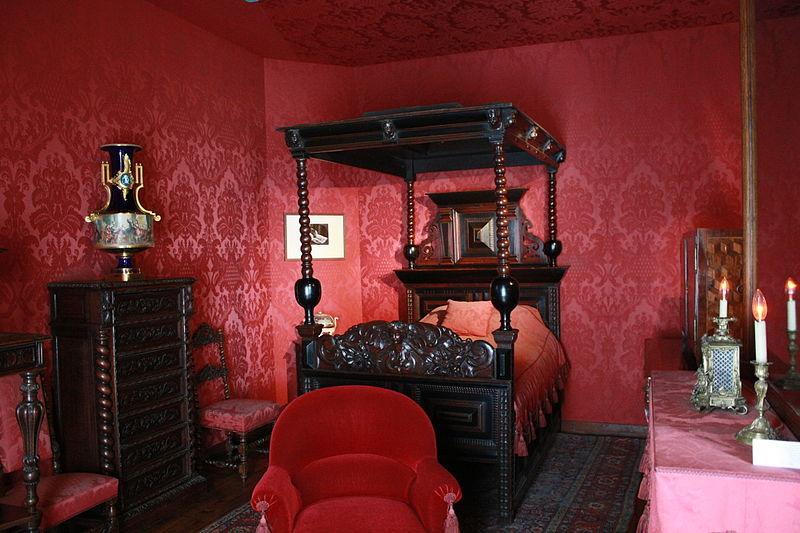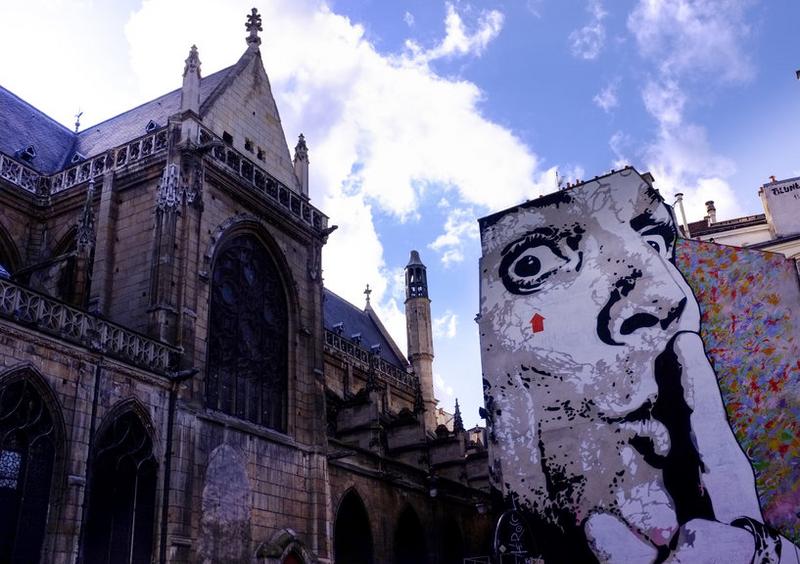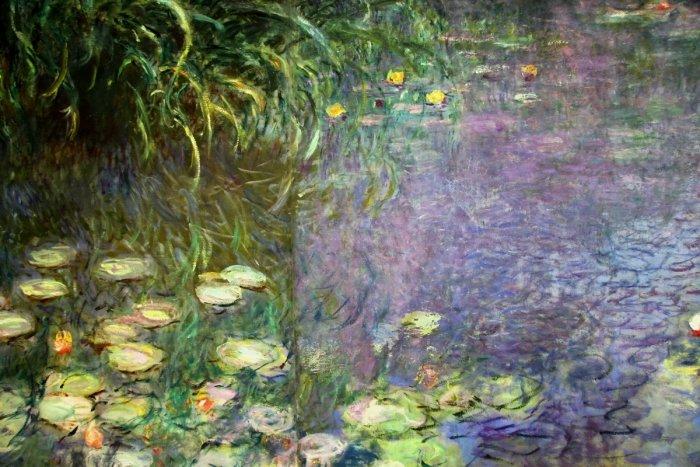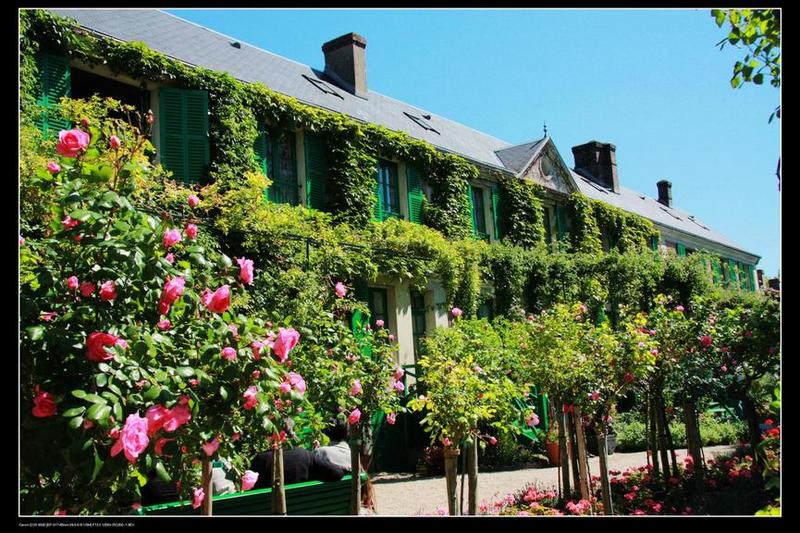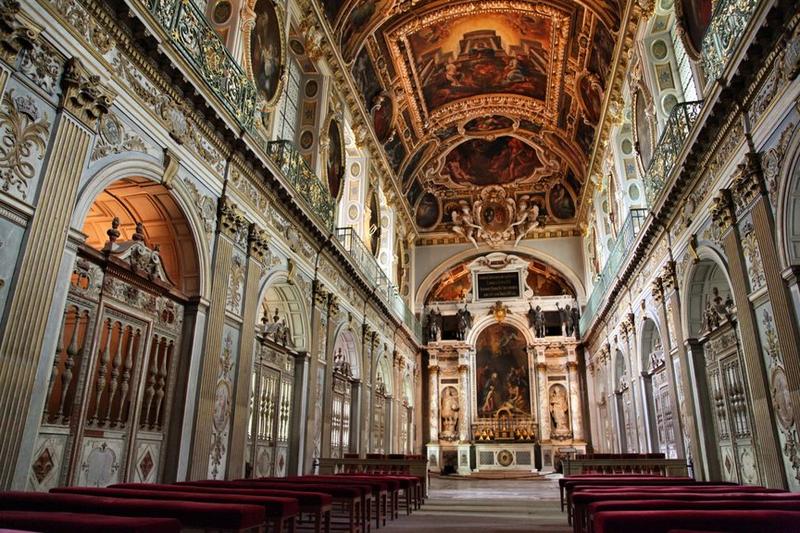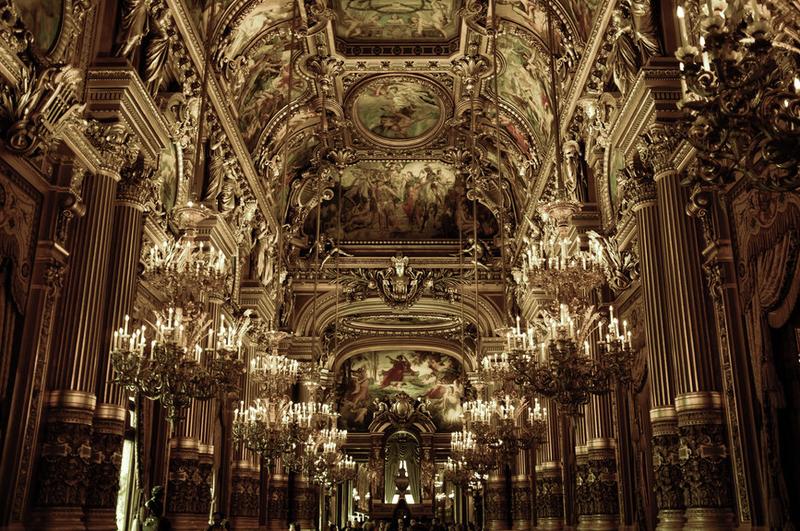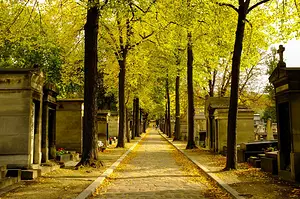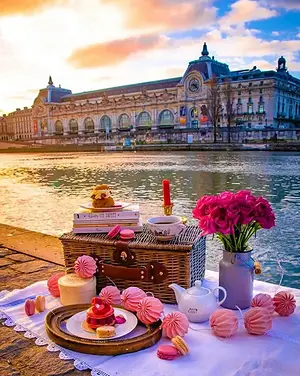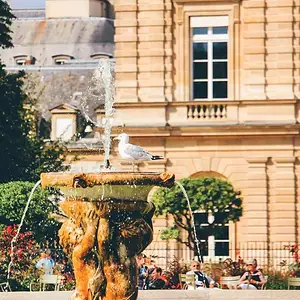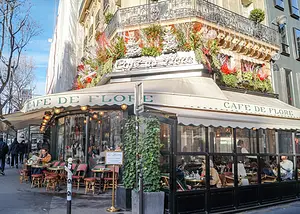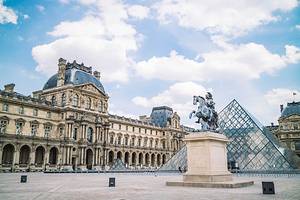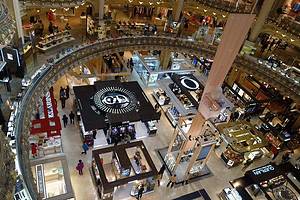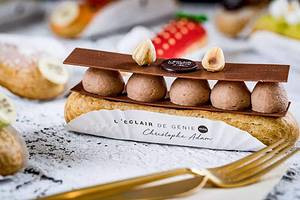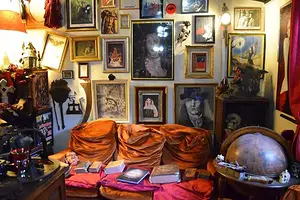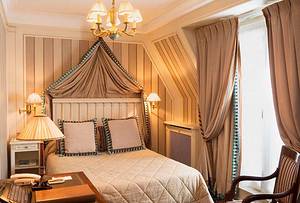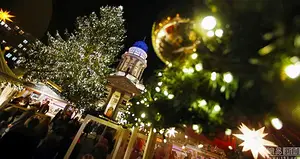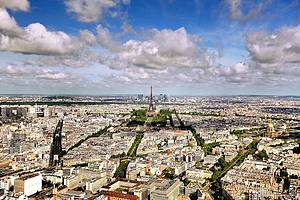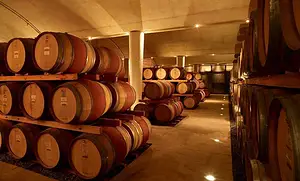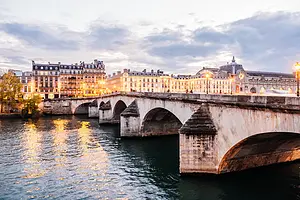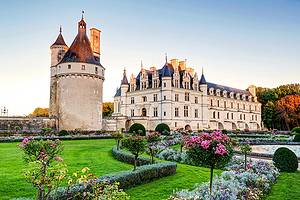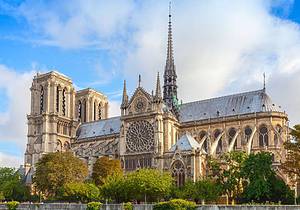5-day Paris history and culture discovery tour
3 cities |
18 attraction(s) |
total distance 250
km
 TIPS
TIPS
Day1
Day2
Day3
Day4
Day5
Day1: Paris
4 attraction(s) ·
9 km
1
The Louvre Museum, the former residence of the French kings, is one of the largest museums in the world. It is divided into eight departments: Oriental Antiquities, Egyptian Antiquities, Greek and Roman Antiquities, Paintings, Sculptures, Art Objects, Islamic Art, and Medieval to 1848. The Louvre was originally a fortress in the late 12th century and was later converted into a royal palace by King Francis I. It has a rich collection of art treasures, including famous Italian paintings. After the French Revolution, it was opened as a museum and has been expanded multiple times, especially during the reigns of Napoleon and Napoleon III. The Louvre is famous for its glass pyramid, designed by Chinese architect I.M. Pei in the 1980s. It houses a vast collection of artworks from different cultures and periods before 1848, including ancient Egyptian, Near Eastern, and Middle Eastern civilizations, ancient Greek and Roman civilizations, Islamic art, and works from the Middle Ages to the mid-19th century. With over 400,000 items in its collection, only about 40,000 are on display. It is recommended to plan your visit based on your preferences, with highlights including the Italian and French painting galleries, the Ancient Egypt section, the Greek and Roman art section, and the Napoleonic apartments.
4
km
2
The Champs-Élysées is a famous avenue in Paris, located in the 8th arrondissement. It is considered to be the most beautiful street in Paris. The avenue stretches from the Arc de Triomphe in the west to the Place de la Concorde in the east. It is part of the city's central axis, along with the Arc de Triomphe du Carrousel. The avenue is often crowded and features luxury brands such as Cartier and Mont Blanc. During holidays, it is decorated with special lights and hosts events like the Bastille Day parade and the final stage of the Tour de France.
2
km
3
The full name of the Arc de Triomphe, located in the center of Place Charles-de-Gaule in Paris, is "Arc de Triomphe de l'Étoile". It was built in 1806 to celebrate a major victory in the "Battle of Austerlitz". Despite Napoleon laying the first stone, he did not live to see its completion. The French people held a funeral for him under the Arc de Triomphe 20 years after his death.
Beneath the Arc de Triomphe, there is an unknown soldier's tomb and an eternal flame in memory of the 1.5 million French soldiers who sacrificed themselves in World War I. On major holidays, a large French flag is hung on top of the Arc de Triomphe, and commemorative activities take place, such as on the anniversary of World War II on May 8th and on Armistice Day on November 11th.
The Bastille Day military parade, held every year on July 14th, starts from the Arc de Triomphe and continues to Place de la Concorde. If you want a good spot, you need to arrive early. During New Year's, the Arc de Triomphe is also a central gathering point, with a large crowd, although there are no fireworks in Paris on New Year's Eve.
The Arc de Triomphe is surrounded by twelve major avenues, with the famous Champs-Élysées, which connects to Place de la Concorde and faces the Louvre Museum, being one of them. This nearly 2-kilometer long avenue is considered one of the most beautiful streets in the world.
3
km
4
The Eiffel Tower, built in 1889, was originally constructed to welcome the World Exposition and commemorate the 100th anniversary of the French Revolution. Standing at a total height of 324 meters, it symbolized the industrial revolution that swept the world at that time. However, after its completion, it faced skepticism from many French people. Its massive steel structure seemed out of place in the entire city of Paris, and some even proposed demolishing it. However, today it has become an undisputed symbol of Paris and France.
Visitors can take the elevator or climb the stairs to the tower to overlook the entire city of Paris (stairs only go up to the second floor). From dusk to dawn after the turn of the millennium (2:00 in summer, 1:00 in winter), the tower sparkles for ten minutes on the hour. During special holiday events, it may have special colors, such as flashing red during the Chinese New Year or blue on European Union Day. On July 14th, the National Day, visitors can enjoy concerts on the Champ de Mars, the square beneath the tower, and it is also a great spot for New Year's countdown.
There are two restaurants on the tower, Tour Eiffel 58 on the first floor and Jules Verne, a Michelin one-star restaurant, on the second floor. The advantage of dining on the tower is that the restaurants can assist with reservations or provide tickets to go up the tower, eliminating the need to queue below. As for these two restaurants, Tour Eiffel 58 offers lunch starting from 19 Euros (mainly sandwiches), and dinner starting from 80 Euros, like a regular restaurant with a significant service charge. On the other hand, Jules Verne, now with only one Michelin star and overseen by chef Alain Ducasse, offers lunch starting from 90 Euros and dinner starting from around 300 Euros per person. If not for the experience of the environment, the author suggests exploring other three-star Michelin restaurants at a similar price but with better food. However, due to their special location, it is not easy to dine there, and it is best to make reservations at least two months in advance during peak season.
Day2: Paris
5 attraction(s) ·
8 km
1
The former residence is located in the famous Place des Vosges, in the heart of the Marais district. It invites visitors to explore the home of the renowned French writer Victor Hugo. Through furniture, various memorabilia, and its stunning interior decoration, you will discover Hugo's three main phases: early, middle, and later years of exile on Guernsey Island. On the ground floor, there are temporary exhibitions and portraits of Hugo showcasing his literary works. The museum offers guided tours of Victor Hugo's apartment and youth (information available at the reception desk). The library is open to the public by appointment. Victor Hugo lived next to Place des Vosges at the Rohan-Guéménée Hotel from 1832 to 1848. Hugo and his wife rented a two-story, 280-square-meter house here, where he wrote a large part of "Marie Tudor" and "Les Misérables." Hugo only moved out of this place a year after the publication of "The Hunchback of Notre-Dame." This municipal museum preserves the way Hugo and his wife lived here and showcases the life of this great writer and poet, as well as Hugo's own Impressionist sketches and portraits.
2
km
2
The Centre Pompidou, also known as Beaubourg, is an art center in Paris designed by architects Richard Rogers, Renzo Piano, and Gianfranco Franchini. It is a modern cultural institution and one of the most popular museums in Paris. The building itself is a postmodern architectural masterpiece with its distinctive color-coded plumbing, ventilation, and elevator systems. The center houses a public library on the second floor and a vast collection of modern and contemporary art on the fourth and fifth floors. It also features a coffee shop on the top floor. The opening ceremony of the Centre Pompidou was presided over by French President Valéry Giscard d'Estaing in 1977, and it includes the National Museum of Modern Art, the musical research center IRCAM, a free library, as well as numerous exhibition halls, shops, restaurants, and cinemas.
3
km
3
The beautiful building with a large clock across the Seine River from the Tuileries Garden in front of the Louvre is the former southwest train station of Paris, which was transformed into a museum with the largest collection of Impressionist art in the world in 1986. The Musée d'Orsay, one of the three major museums in Paris, mainly collects art treasures from 1848 to 1912 (for items before 1848, it is recommended to visit the Louvre, and for art after 1912, it is recommended to visit the Pompidou Center). Some must-see masterpieces here are Vincent van Gogh's "Self-Portrait" and "The Church at Auvers", Claude Monet's "Impression, Sunrise" and "Woman with a Parasol", Jean-François Millet's "The Gleaners", Edouard Manet's "Luncheon on the Grass", Paul Cézanne's "Still Life", and numerous fine works by Pierre-Auguste Renoir, Paul Gauguin, and Pablo Picasso.
2
km
4
Musée de l'Orangerie is a small but extraordinary museum located by the Seine River, right next to Place de la Concorde. Originally a part of the former Tuileries Palace, it now houses a portion of the palace converted into a museum. The main attraction is the masterpiece series "Water Lilies" by Claude Monet, along with other works by renowned artists such as Picasso, Cézanne, Renoir, Matisse, etc. The museum was originally built in 1852 as a greenhouse for orange trees and later transformed into an exhibition space. It was specifically turned into a permanent home for Monet's "Water Lilies" at his request. The Musée de l'Orangerie underwent renovations in the 1960s and continues to host temporary exhibitions alongside the iconic "Water Lilies" series.
2
km
5
The Seine River is the second largest river in France, flowing through the center of Paris. It is 780 kilometers long and has a drainage area of 78,000 square kilometers. The river is constrained by artificial stone embankments in the central section of Paris, which were inscribed on the UNESCO World Heritage List in 1991. The French refer to the north bank of the Seine as the "right bank" and the south bank as the "left bank".
The Seine River in Paris is known for its numerous bridges, with the most magnificent being the Alexander III Bridge, which was a gift from Tsar Nicholas II of Russia and named after his father. Many important cultural and historical landmarks in France are located along the banks of the Seine, such as the Louvre Museum, Les Invalides, the Pantheon, the Orsay Museum, the Palace of Versailles, the Eiffel Tower, and the Arc de Triomphe. The Seine River has also nurtured many world-renowned cultural figures and is considered the mother river of Paris, a city known for its rich cultural heritage.
Day4: Giverny > Fontainebleau > Paris
4 attraction(s) ·
226 km
1
Monet's Garden is located 88 kilometers northwest of Paris in the Upper Normandy province. In 1883, Monet was attracted to this place when he passed by on a train, so he moved here to live. For 43 years, Monet spent half of his life here and created countless works. Monet referred to it as "the most beautiful of my works." Today, 85 years after Monet's passing, it is still maintained in its original state as when Monet lived here. From the tulips that bloom in April when the garden opens, to the famous water lilies in the height of summer, to the chrysanthemums before the garden closes in October, you can find the colors from Monet's paintings here.
141
km
2
The Fontainebleau Palace is located 65 km southeast of Paris surrounded by forests, and it is a popular hiking destination for Parisians. Originally a royal hunting lodge, it was expanded during the reigns of King Francis I and King Henry II, becoming one of the most important palaces of the French Renaissance. Napoleon once imprisoned the Pope here, and later abdicated here. The palace has undergone continuous renovations and expansions until the 19th century, involving many famous architects and artists who left their marks from different architectural styles. The surviving buildings include the main tower from the 13th century, six royal residences built by kings from various dynasties, five courtyards, and four gardens representing different eras. However, the exterior still retains the traditional French Gothic style. The main areas open for visitors include the Horseshoe Staircase, the François Gallery, the Small Chapel, the Throne Room, the Ballroom, the Diana Gallery, Napoleon's Drawing Room, as well as the bedrooms, studies, suites, and living rooms of the emperors and empresses. There is also a dedicated museum commemorating Napoleon I. The Fontainebleau Palace consists of four museums: the Chinese Museum, the Napoleon I Museum, the Household Museum, and the Gallery. Among them, the Chinese Museum holds a large collection of Chinese artifacts from the Yuanmingyuan, but it is rarely open to the public. The most attractive features are the Gallery of Francis I, the Theatre of Napoleon III in Baroque style, and the Chapel of the Trinity. Visitors can also admire the bedrooms from different periods of the French royal family and the Diana Garden. The Fontainebleau forest, once used for royal hunting, is a favorite weekend getaway for Parisians.
84
km
3
Place de la Concorde is a large square in the heart of Paris, France, with an area of approximately 84,000 square meters. In the center of the square stands a massive Egyptian obelisk adorned with hieroglyphs praising the rule of Pharaoh Ramses II. The obelisk was originally erected at the entrance of the Luxor Temple and was gifted to France by Muhammad Ali, the Ottoman governor of Egypt, in 1829. It arrived in Paris on December 21, 1833, and was erected in the center of Place de la Concorde by King Louis-Philippe on October 25, 1836. The original apex was missing, so in 1998, the French government added a golden pyramid-shaped apex to the obelisk.
1
km
4
Pont Alexandre III was built in 1897 and is an arch bridge spanning the Seine River in Paris, France. It connects the Champs-Élysées district on the right bank with the Invalides and Eiffel Tower area on the left bank. The bridge is named after Tsar Alexander III of Russia and was built to commemorate the Franco-Russian Alliance formed in the late 19th century. It is adorned with numerous exquisite sculptures and is illuminated by yellow lights at night. Pont Alexandre III has appeared in various Paris postcards, films, and music videos, such as Adele's "Someone Like You."
Day5: Paris
4 attraction(s) ·
9 km
1
Montmartre is a small village located on a hill about 130 meters high, just outside the northern outskirts of Paris. It was not designated as the 18th district of Paris until the Second Empire. Montmartre developed into the entertainment center of Paris during that time, attracting artists such as Van Gogh, Picasso, Matisse, and Renoir. Today, it is a popular tourist destination, known for attractions such as Moulin Rouge, Sacré-Cœur Basilica, Place du Tertre, and the "Mur des Je t'aime" (Wall of Love). Other attractions in Montmartre include Moulin de la Galette, Place Pigalle, Le Lapin Agile, Musée de Montmartre, Cimetière de Montmartre, and the Passe-Muraille Statue.
3
km
2
The Wall of Love (Mur des Je t'aime) is located around the Montmartre hill, covering an area of 40 square meters. Over 250 handwritten languages express the phrase "I love you" on the wall. The leftmost vertical "I love you" is in Chinese, and the word "love" is in traditional Chinese characters. Above the wall, there is a beautiful woman leaning on a small table, with a few lines of text beside her saying, "Stay rational, it's impossible to force it." Couples can go to the Square of Small Hills to find the Wall of Love (Mur d'amour), which gathers "I love you" in various languages around the world.
3
km
3
Sacré-Cœur Basilica is a Catholic church located in Montmartre, in the northern part of Paris. It is dedicated to the Sacred Heart of Jesus and is one of the famous landmarks of Paris. The construction was completed in 1914 but was officially opened for use in 1919, after the end of World War I.
The overall style of the Sacré-Cœur Basilica has strong Roman-Byzantine influences, with many designs incorporating elements of nationalism. It features three arches and is adorned with equestrian statues of Saint Joan of Arc and King Louis IX on either side. The 19-ton Savoyarde bell, cast in 1885, is one of the largest bells in the world. The funding for the construction of the basilica was entirely through private donations, totaling around 7 million francs, which were exhausted even before the ground was broken. A temporary altar was set up on March 3, 1876, with donations from pilgrims quickly becoming the main source of funding.
The Sacré-Cœur Basilica is built using limestone extracted from Château-Landon, which constantly releases calcite to ensure that the basilica maintains its white appearance despite weathering and pollution. The church's dome is adorned with a huge mosaic known as the Christ in Majesty, which is one of the largest mosaics in the world. The exterior of the basilica includes a garden with meditation areas and fountains.
The platform in front of the church offers a panoramic view of parts of Paris, and visitors can also climb 300 steps to the bell tower of the Sacré-Cœur Basilica for an unobstructed view of the city.
4
km
4
Opéra Garnier
Opera Garnier (formerly known as the Paris Opera House) was designed by the young architect Garnier and is now a symbol of Napoleon III and Empress Eugenie's love. The theater is known as a popular dating spot and is located on the Italian Boulevard, which is lined with many good-value restaurants. Today, most performances take place at the Opera Bastille, so Opera Garnier is open for visitation during the day. It is also a popular tourist destination due to its proximity to famous department stores such as Galeries Lafayette and Printemps.




